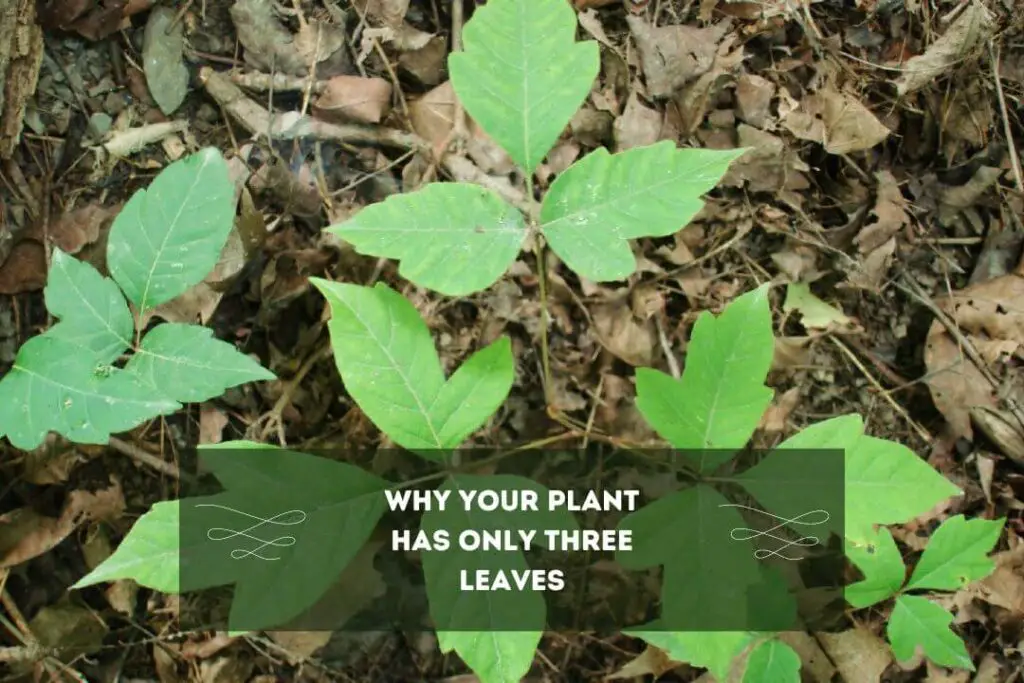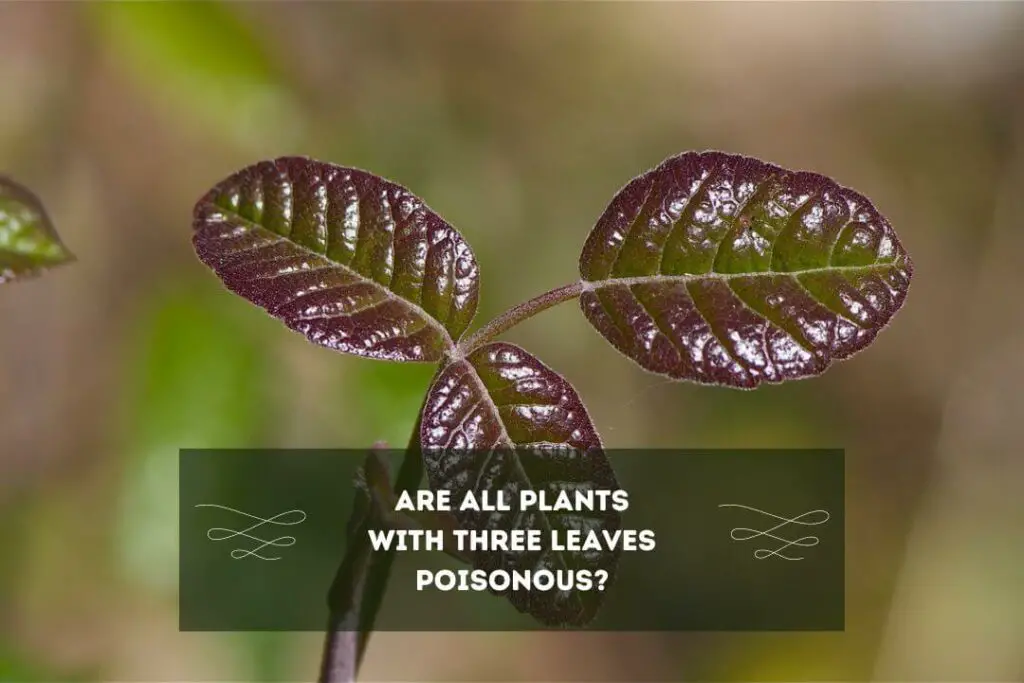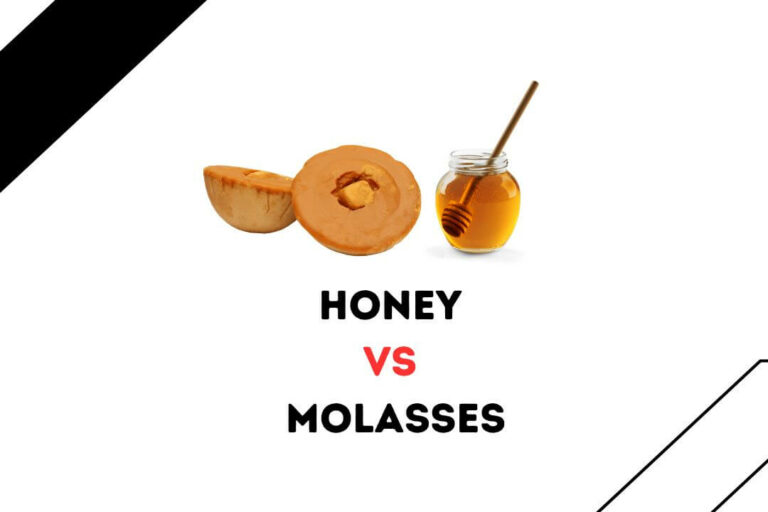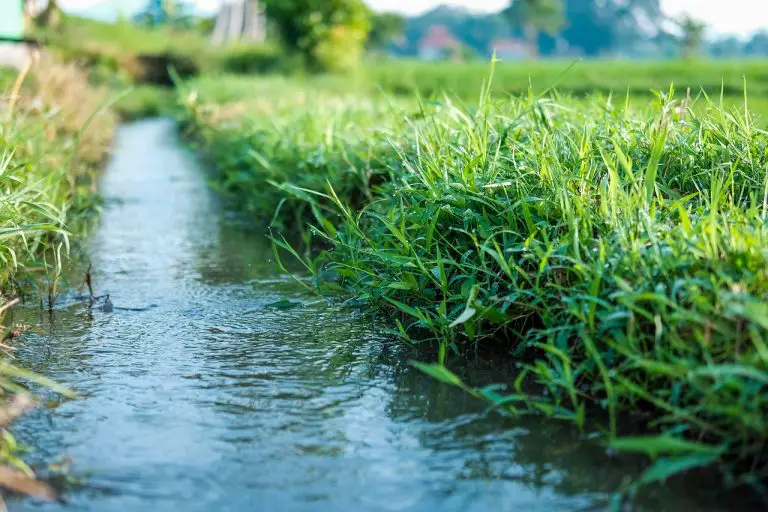If you are wondering ‘Why Your Plant Has Only Three Leaves,’ it’s time to pay some attention to it. People often ask me, ‘why does my pot plant have three leaves.’ You should know that several factors can affect the number of leaves a plant has. In this article, we’ll discuss the main reasons ‘why my plant only has three leaves’ and provide some steps to identify the cause.
You should know that a few plant species usually grow three leaves at a time only. Therefore, it is essential to know whether there is any intrinsic property of the plant responsible for 3 leaves or any other environmental factors.
Sometimes improper care and maintenance cause the issue. This is why you should read this article thoroughly. Later, I will also answer some frequently asked questions, like are all plants with 3 leaves poisonous?
3 Reasons Why Your Plant Has Only Three Leaves

Genetics
Did you know that the plant’s natural properties play a significant role in determining the number of leaves a plant will have? Some plants are genetically & naturally evolved to have only three leaves, while others have more.
According to a study by the University of California Cooperative Extension, specific species like white cloves are genetically predisposed to having three-Four leaves. Therefore, if you notice that your plant only has three leaves, it could be due to genetics. You may have got the wrong plan from the nursery. Some Examples of Plants with three leaves are
- Clover
- Oxalis
- Trillium
- Wild strawberry
- Shamrock
Environmental Factors
If your plant is not getting the proper amount of light as it should be, it will not be able to produce as many leaves as it should. According to the University of Illinois Extension, plants that receive inadequate light often have fewer and smaller yellow leaves than those that receive sufficient sunlight.
In addition, other environmental factors like wrong watering or temperature could affect your plant’s ability to produce a bunch of leaves. If your plant is not getting the proper amount of water, it will not be able to grow efficiently. You should also know that some plants prefer cooler temperatures while others prefer warmer ones.
Therefore, if your plant is exposed to unwanted or unnecessary temperatures that are too hot or too cold, it will not be able to produce leaves as it should. According to Oregon State University, plants exposed to temperatures above 90°F (32°C) may develop fewer leaves. You should also know that nitrogen deficiencies can result in stunted growth and fewer leaves (According to Washington State University).
All types of plants need soil rich in nutrients, well-draining, and balanced pH. Another reason or environmental factor can be poor quality soil or nutrient deficiency. Maybe your plant cannot produce enough leaves due to a lack of nutrient imbalances.
It is essential to learn what nutrients a plant needs according to specific conditions like soil type, temperature, the climatic disease of your region, and many more. You should know that every nutrient plays a unique role in the growth & development of plants. Thus, if your plant lacks any specific nutrient, it will not produce as many leaves as it should.
Common Deficiencies or Imbalances that Cause Three Leaves
- Nitrogen deficiency
- Phosphorus deficiency
- Potassium deficiency
- Calcium deficiency
- Magnesium deficiency
You can consider using natural sweeteners for your plans, like honey or molasses. Recently, I’ve shared a proper guide on Honey vs molasses: Which is better for plants? For you to check out. Thank me later 🙂
Pests and Diseases
If your plant previously had a lot of leaves but suddenly lost most of them, leaving only 3, it might be suffering from test infestations. You should know that best infestations and diseases are the primary cause of plant leaf loss.
Many types of insects, such as aphids and spider mites, can damage your plant leaves, causing them to fall prematurely. Other than this, many kinds of diseases, like powdery mildew and leaf blight, affect the number of leaves a plant has. Insects such as aphids and spider mites can damage the leaves, causing them to fall off prematurely. If you notice the tips of plant leaves turning black, it can be due to pests and disease also.
How to Identify the Cause?
- Firstly I recommend you find out what specimen or the variety of plants you have. Examining the plant variety is necessary to determine whether the plant is genetically evolved to have only three leaves.
- After that, consider evaluating your plant environment by checking the amount of light it receives daily. You should also pay attention to the temperature and humidity level around your plant. It is essential to avoid over or underwatering your plant.
- It is always a good idea to check the soil quality using a soil testing kit widely available in the nearby store online or offline. This will help you determine if your plant needs any specific news that might be responsible for leaf production.
- Also, you should monitor your plant and check for signs of pest infestations and diseases. If you find any, take action quickly and use the appropriate pesticide or fungicide to control the issue.
- You should transplant your plant if your plant needs to get the proper amount of space or if the pot is small. Depending on the problem, you should adjust its going condition and location.
Are All Plants with Three Leaves Poisonous?

No, not all plants with three leaves are poisonous. You should know that the number of leaves on a plant is not an indicator of its toxicity. Some plants with three leaves are safe to consume, while others may be toxic.
In general, toxicity is determined by the plant’s chemical properties, not its physical appearance. However, a few plant species with three leaves tend to have a higher concentration of toxins in their leaves, roots, stems, or flowers. Let’s talk about some poisonous and non-poisonous plants with three leaves.
5 Poisonous Plants with Three Leaves
- Poison ivy
- Poison oak
- Poison sumac
- Doll’s eyes
- Jimsonweed
5 Non-Poisonous Plants with Three Leaves
- Clover
- Oxalis
- Trillium
- Shamrock
- Wild Strawberry
What Do Three Leaves on a Pot Plant Mean?
The number three is also significant in many religions and spiritual practices. The meaning behind three leaves on a pot plant can vary depending on cultural and symbolic significance. Therefore, below, I’m sharing some exciting facts on what three leaves on a pot plant mean in a different culture.
- In some cultures, the shamrock plant, with its three leaves, symbolizes good luck.
- In Christianity, the Holy Trinity is represented by three leaves or three circles.
- In Hinduism, the Trimurti represents the three aspects of God – Brahma, Vishnu, and Shiva.
- In Celtic culture, the shamrock with its three leaves symbolized the goddess Brigid and represented the three realms – land, sea, and sky.
- In Japan, the mitsuba plant with its three leaves is used in cooking and is considered a symbol of happiness, health, and long life.
Conclusion
After reading this article, I hope you will be able to identify the actual cause of why my plant has only three leaves. Since there can be several factors that can contribute to a plant having only three leaves that, include genetics, improper watering, incorrect temperature, lack of light, nutrient deficiency, and diseases, you should take the necessary step to improve the plant’s growth and development after identifying the actual culprit.
Consider consulting with a professional horticulturist if you are still struggling with your plant’s three leaves. I have given my best to write this article and explain why your plant could have only three leaves.
If you find this article helpful, then consider sharing it. Your share is going to help many people understand the actual reason behind plants having 3 leaves only. They will also learn about the cultural importance of 3 leaves in different societies and religions. Do check our other helpful guide on plant care and management. If you find the article helpful, then consider sharing it.



![What to Do with Potted Plants When It Rains? [A Practical Answer]](https://gardenthrone.com/wp-content/uploads/2022/10/what-to-do-with-potted-plants-when-it-rains-768x412.jpg)

![Why Is My Plum Tree Not Flowering? [4 Common Reasons & Solution]](https://gardenthrone.com/wp-content/uploads/2022/12/Why-Is-my-plum-tree-not-flowering-768x512.jpg)
![What Do Drift Roses Look Like in Winter? [A Practical Answer]](https://gardenthrone.com/wp-content/uploads/2022/10/what-do-drift-roses-look-like-in-winter-768x431.jpg)
